Related Research Articles

Tormod Kristoffer Hustad was the Norwegian minister of agriculture in the 1940 pro-Nazi puppet government of Vidkun Quisling, provisional councilor of state for agriculture in the government appointed by Reichskommissar Josef Terboven in 1940, and minister of labour in the NS government 1942–1944. He was replaced by Hans Skarphagen in 1944. In the post-war legal purges he was convicted of treason and sentenced to life imprisonment and forced labour.

Gulbrand Oscar Johan Lunde was a Norwegian chemist and politician of the Nasjonal Samling party who became a minister in the collaborationist government of Vidkun Quisling during World War II. His 1942 death was deemed accidental, although a 2012 biography of Lunde concluded that he was assassinated because his cultural views clashed with those of the government of Nazi Germany.
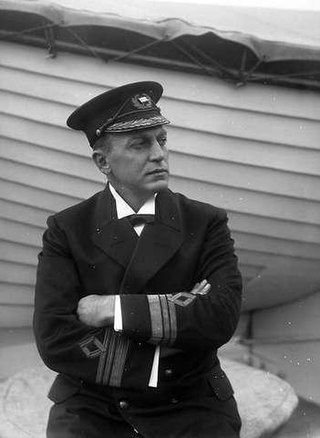
Kjeld Stub Irgens was a Norwegian politician during the German occupation of Norway.
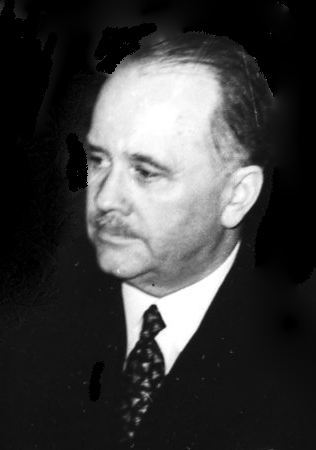
Erling Sandberg was a Norwegian banker and politician.
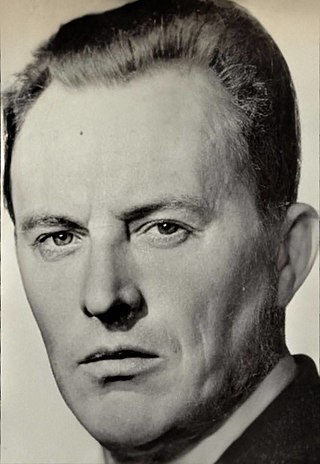
Asbjørn Edvin Sunde was a Norwegian politician for the Communist Party of Norway, communist partisan during the Spanish Civil War, saboteur against the Nazi occupation of Norway during the Second World War, and a convicted Soviet spy. During the Second World War, from 1941 to 1944, Sunde's group, the Osvald Group, carried out approximately 39 acts of sabotage and assassination against the German occupation forces and Norwegian collaborators. In 1954 he was convicted by Eidsivating Court of Appeal of treason and espionage in favour of the Soviet Union, and sentenced to eight years in prison. He was released from prison in 1959 after serving two thirds of his sentence. He was expelled from the Communist Party of Norway in 1970.
Ferdinand Schjelderup was a Norwegian mountaineer, Supreme Court Justice and resistance member during the German occupation of Norway.

Ernst Josef Albert Weiner was a German SS-Hauptsturmführer during World War II. He was most noted for his role in Operation Blumenpflücken during the occupation of Norway by Nazi Germany.
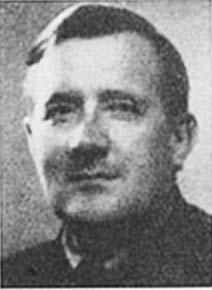
Ludvik Buland was a Norwegian trade unionist. He chaired the Norwegian Union of Railway Workers, but was imprisoned and died during the occupation of Norway by Nazi Germany.
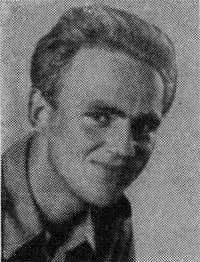
Gregers Winther Wulfsberg Gram was a Norwegian resistance fighter and saboteur. A corporal and later second lieutenant in the Norwegian Independent Company 1 during the Second World War, he was killed in 1944.
Thomas Christian Wyller was a professor of political science at the University of Oslo. He is regarded as one of the founders of political science as an academic discipline in Norway, and his area of interest was modern political history.
Olav Ringdal was a Norwegian resistance member during World War II.

The Quisling regime, or Quisling government are common names used to refer to the fascist collaboration government led by Vidkun Quisling in German-occupied Norway during the Second World War. The official name of the regime from 1 February 1942 until its dissolution in May 1945 was Den nasjonale regjering. Actual executive power was retained by the Reichskommissariat Norwegen, headed by Josef Terboven.
Tollak Bakke Sirnes was a Norwegian physician, psychiatrist and pharmacologist.

Wilhelm Frimann Koren Christie was a Norwegian jurist and Nazi collaborator. He is best known as director of the Norwegian Broadcasting Corporation for some time during the occupation of Norway by Nazi Germany.
The Lysaker Bridge sabotage was a sabotage action in World War II which occurred in Norway on the night between 13 and 14 April 1940 when a bridge at Lysaker, bordering Oslo, was blown up.
Operation Blumenpflücken was a counter-resistance operation in occupied Norway, planned and carried out by the Gestapo/Sicherheitspolizei in 1944 and early 1945.
The milk strike was a strike in Nazi-occupied Oslo on 8 and 9 September 1941. It led to strong reprisals from the German occupiers, in the form of martial law, court-martial, mass arrests, two executions and several long-term jail sentences.
Operation Almenrausch was a counter-resistance operation in occupied Norway, planned and carried out by the Wehrmacht and the Nazi-controlled Norwegian Statspolitiet on 13 June 1944. It was named after the Almenrausch, an "Alpine Rose" growing in continental Europe.
Ørnulf Egge was a Norwegian politician for the Workers' Youth League and Communist Party and resistance member during World War II.
The theatre strike in Norway in 1941 was a conflict between Norwegian actors and Nazi authorities, during the German occupation of the country. The strike involved theatres in the cities of Oslo, Bergen and Trondheim. The strike started on 21 May 1941, as a response to the revocation of working permits for six actors, after they had refused to perform in the Nazified radio. It lasted for five weeks.
References
- 1 2 Toft, Martin (11 December 2008). "Hundreårets viktigaste restaurering". Uniforum (in Norwegian). Retrieved 26 October 2009.
- 1 2 Collett, John Peter (1999). Historien om Universitetet i Oslo (in Norwegian). Oslo: Universitetsforlaget. pp. 159–160. ISBN 82-00-12937-3.
- 1 2 Collett, 1999: p. 164
- 1 2 Hjeltnes, Guri (1995). "Aula-brannen". In Dahl, Hans Fredrik (ed.). Norsk krigsleksikon 1940-45 . Oslo: Cappelen. Archived from the original on 21 August 2011. Retrieved 23 October 2009.
- 1 2 3 Nøkleby, Berit (1995). "studentene". In Dahl, Hans Fredrik (ed.). Norsk krigsleksikon 1940-45. Oslo: Cappelen. Archived from the original on 5 January 2010. Retrieved 23 October 2009.
- 1 2 Collett, 1999: p. 165
- ↑ Collett, 1999: p. 166
- ↑ Collett, 1999: p. 167
- ↑ Moland, Arnfinn (1995). "Moen, Petter". In Dahl, Hans Fredrik (ed.). Norsk krigsleksikon 1940-45. Oslo: Cappelen. Archived from the original on 28 May 2014. Retrieved 23 October 2009.